
—— So Pro Tools opened their platform to Core Audio/ASIO in version 9, which let users choose their own audio interface. Why did you choose PreSonus ?
The project I’m working on makes musicians the clients. That’s why I needed a high-quality system that allows me to do remote recordings with low budget, but still gives the freedom of using my own gear. I was also looking for something that had many channels with a good mic preamp - preferably on each of the channels - but is compact. When I searched for a product that met all these needs, PreSonus was the natural choice.
I am very happy with the functionality and the quality of sound. I really appreciate having 24-channel audio interface and mic preamp fit in a 3U rack. And the characteristics of all mic preamps are the same. My PreSonus products are all just 180mm in depth and weighs less than 10kg all together. This makes it really easy for me to take the gear to the venues. It is truly a mobile solution.
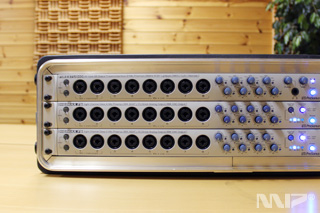
—— How many channels do you need for live recordings ?
In most cases, I think 16 would do the job, but I like having 24 channels just in case. It makes it easy for mixing later on and can easily meet the needs of last-minute requests from the clients.
Also, both the FireStudio and DigiMax FS’s ADATs are compatible with S/MUX. So between these two devices, I can record 16 channels in 24-bit/ 96kHz. This makes it a great system also for high-quality audio streaming.

—— PreSonus’ FireStudio and DigiMax FS are built with its signature XMAX Class A microphone preamplifiers. What are your opinions about how they sound ?
My first opinion was that it has a solid core to the sound. I was genuinely surprised by its solidness with products in this price range. Also, high headroom resulting from a 30V power rail is a characteristic of XMAX preamplifiers. Headroom is very important for professional environments. There are no problems using it in live recordings either.
I want to add that both the FireStudio and DigiMax FS have a similar design where the inputs are designed on the front panel of the devices. This makes it easy to check what goes where without using a flashlight to make sure everything is connected properly in the back panel. I was also impressed by the triangle gain-knobs. I think the people who designed them really knew what they were doing. I regularly use GML or Cameleon Lab preamps depending on the genre and the instrument, but the sound of the preamps on the PreSonus devices are extremely comparable to these devices. In other words, I feel they can be used in recording studios for commercial products. I am really happy to have 24-channels of these for mobile recordings. It really was exactly what I was looking for.
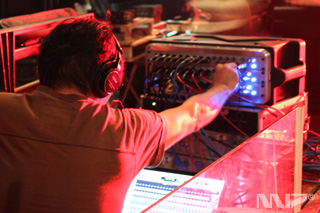
—— What do you feel about the characteristics of XMAX ?
It has an extremely solid core – especially the mid-range. So I think it’s rather a better system for rock and pop music instead of jazz. FireStudio and DigiMax FS both have the same XMAX mic preamps built-in, so it is very natural using the devices together. I am actually using 3 devices all together, but it honestly feels like it is one interface with 24 channels. This was possible because PreSonus understands all gear from outboards to audio interfaces.
|
 |
—— Did you feel latency from the 3 devices put together ?
I was worried about it before using it, but it seems there aren’t any problems. I guess it’s the TC Applied Technologies’ JetPLL synchronization technology. If you measured it, you would probably see the latency from the the wire connection, but I don’t think it’s a huge problem.
If you are sensitive about latency, you might want to use a word clock. I have assigned the FireStudio as the master and DigiMax FSs connected in parallel, and I’ve no trouble with it. I also like the fact that all devices have word clock termination built-in.

—— When did you start using this recording system ?
There was a live concert at Ogikubo Velvet Sun on September 9, and that is when I officially started using this system. The set-up was voice, acoustic guitar, fretless bass, piano and drums. I used 2 microphones for piano, 5 for the drums, 1 for guitar and 2 for the hall. Line input for bass and the vocal mic was shared with the PA.
I also used a field recorder, so please compare it to the one recorded by the PreSonus mobile recording system and then mixed afterwards. You should be able to tell how great the system is.
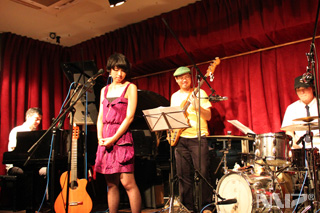
Kemono's official website: http://kemonoz.com
Kemono – “Day by Day” at Ogikubo Velvet Sun
Recording by a field recorder
Kemono – “Day by Day” at Ogikubo Velvet Sun
Recording by PreSonus mobile recording system
—— Can you tell us about the microphones you used ?
The piano was mic’ed with 2 AKG C-414s and 2 M-Audio Sputnik was used as drum overheads. Sennheiser MD 421 was used for the kick drum and Shure SM57 for the hi-hat. I also used a SM57 for the guitar. Sputnik is one of my favorites and I use them quite often. The microphones I brought myself for the vocals didn’t work too well, so I used the AUDIX that the PA prepared. The hall was mic’ed by 2 AKG C-451Bs, in the audience.
The preamp setup was the Cameleon Labs 7622 for drums and bass, and GML 8304 for piano, acoustic guitar and vocals. FireStudio’s XMAX mic preamps were used for the hall. I also had API 550 for drum overheads, piano, vocals and bass. It was connected just how it would be in a studio. So Cameleon Labs 7622 to API 500 then to 48kHz DigiMax D8 (in place of DigiMax FS, which we didn’t make it in time).
|
 |
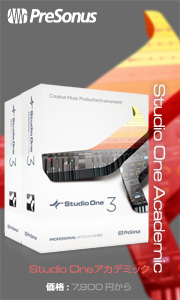
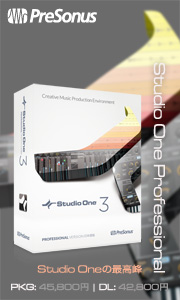
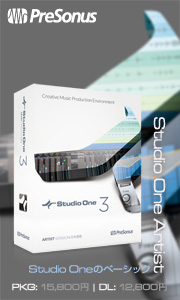 |


